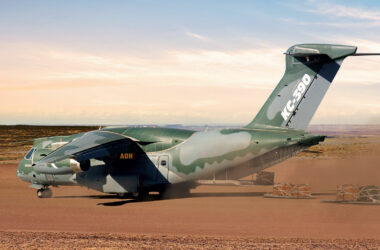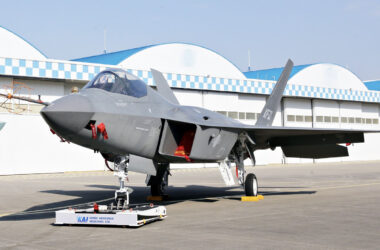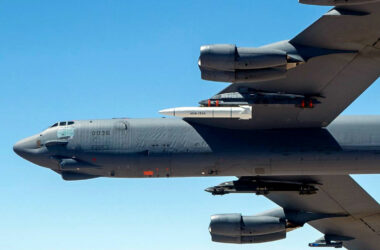Yakovlev, a division of UAC and part of state-owned Rostec, is reportedly working on a 5th-generation fighter capable of vertical take-off and landing (VTOL), TopWar.ru reported.
The outlet did not provide further details on the aircraft’s intended use, although it is expected to be used as a naval fighter.
The Russian Navy has not had a V/STOL jet since 1991, when the Yakovlev Yak-38 was retired from service and replaced by naval versions of the MiG-29 and Su-27.
Follow Air Data News: WhatsApp | Google News | Instagram | LinkedIn | Twitter | Facebook

The last Russian vertical take-off and landing aircraft was the Yak-141, which also became the first aircraft in the world to fly above the speed of sound.
With the collapse of the Soviet Union, Yakovlev entered into a partnership with Lockheed to pursue the project, but although four Yak-141s were built and several flights were made, the program collapsed due to lack of resources.
One of the “Freestyle” prototypes even participated in the Farnborough Airshow in 1992, demonstrating its then-unique configuration of two forward vertical lift engines and a vectorable rear afterburner turbofan.
A similar arrangement was later adopted on the F-35B Lightning II, from Lockheed Martin, but it replaces the two turbojets with a lift fan powered by the main engine.

Demonstrator followed by operational fighter and supersonic VTOL aircraft
Yakovlev’s experience with carrier-based short takeoff and landing or vertical landing aircraft began with the Yak-36 demonstrator in 1963, but it was the Yak-38 that became the first operational Russian V/STOL fighter.
The subsonic jet used a similar concept to the British Harrier, with two pivoting nozzles in the tail, but supplemented the necessary vertical thrust with two small front engines.
For vertical lift, the Yak-38 had a port in the upper and lower parts of the forward fuselage.

The Yak-141 followed a similar configuration except for the replacement of the engine with two small pivoting nozzles with an afterburner section that rotated between the horizontal and vertical positions.
In tests in the 1980s, the Yak-141 reached Mach 1.7 and seemed to be a suitable solution for the Russian Navy’s Kiev-class aircraft carriers.
Currently with limited resources and having to use them in the war against Ukraine, it seems unlikely that Rostec will be able to get the project off the ground, however.






